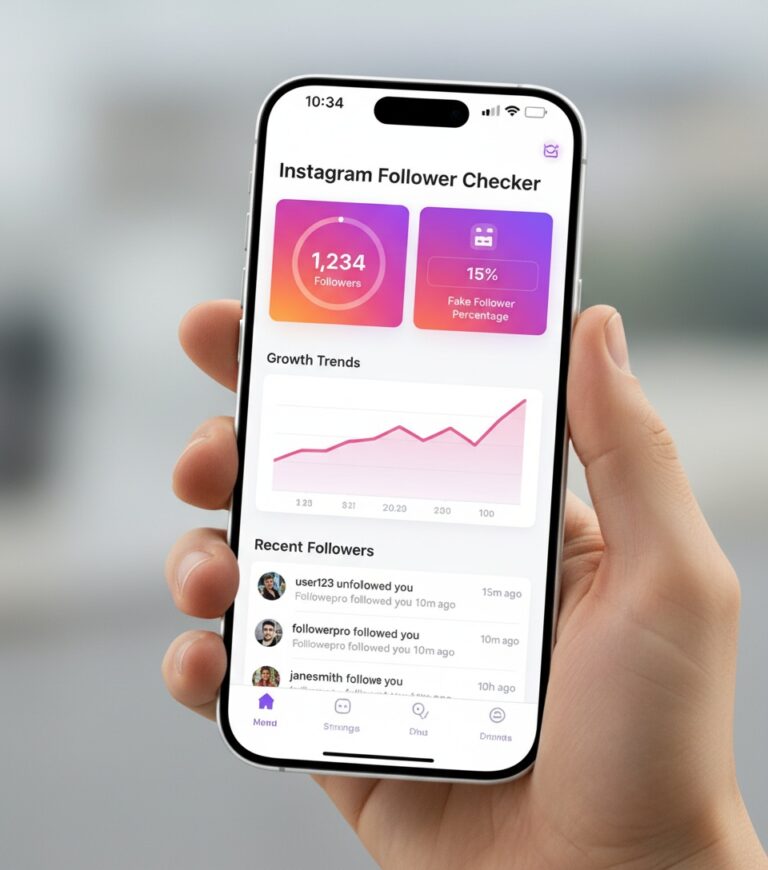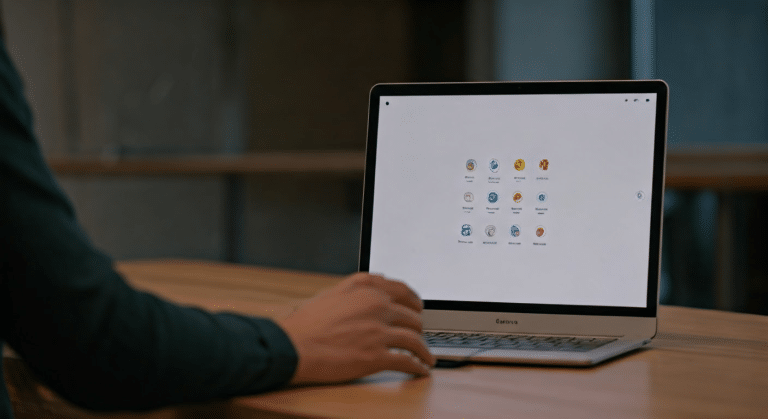Visual Query Engines: Power, Ethics, and Trends
Last Updated on March 4, 2025 by admin
Reverse image search is a fascinating tool I’ve explored extensively. In my experience, searching by image opens a world of possibilities, from identifying unknown objects to tracking online images. I’ve tested various reverse image search engines, including Google Images, and found them incredibly useful for finding similar images. Through image reverse search, I discovered reverse search capabilities that help locate visually similar images effortlessly. The reverse photo search tool is essential for those seeking to verify the authenticity of photos or find identical images. This naturally brings us to explore how reverse image lookup can enhance our understanding of image content.
How Reverse Image Search Works
Reverse image search has become an invaluable tool in our digital age. I’ve tested various reverse image search methods, and they all share a common principle. You start by uploading an image or entering an Reverse Image Searchphp into the search bar. The reverse image search tool then scans its extensive database to find visually similar images. In my experience, this reverse image search method is straightforward and effective.
Building on this, let me explain how Google reverse image search works. You can access Google images through your browser, click the camera icon in the search bar, and upload image files or paste an image URL. Google image search then processes the image using computer vision technology, providing you with relevant images. This feature is available on both mobile devices and computer devices, ensuring versatility. Tineye.
- Upload image or paste image URL
- Search engines analyze the image
- Find similar photos and related images online
- Identify duplicate images and fake social media accounts
What’s particularly interesting is the range of results. Reverse search engines offer high-quality images, similar pictures, and matching images. Whether you’re using a picture finder or a reverse photo lookup tool, you can find related images across other websites quickly. This reverse image lookup helps in creating visual content and ensures image search engine optimization. It’s a resourceful method for anyone looking to find similar images or identify the most relevant images online.
Top Reverse Image Search Tools
In my experience, reverse image search has become an indispensable tool for identifying and verifying images. Whether you’re a content creator or just curious about a particular image, these tools offer immense value. I’ve tested various image search engines, and I recommend the following top reverse image search tools. Pimeyes.
First, Google Images offers a robust Google reverse image search. You can search by image easily by uploading images or pasting a link address. The search results often include identical images and relevant information about where the image appears online.
Building on this, TinEye is another excellent reverse image finder. It focuses on finding identical images and provides a list of websites where the image appears. It’s a go-to reverse photo search utility for finding similar pictures swiftly.
Connected to this, Yandex serves as a powerful image search engine. In my experience, Yandex’s reverse search capabilities excel in identifying similar images and similar pictures. It offers high-resolution images in its search results, making it a valuable picture search tool.
- Search by image using various methods
- Find similar images across platforms
- Verify image authenticity and usage
These reverse image search tools cater to diverse needs, ensuring accurate and comprehensive results. They empower users to search images effectively and efficiently, leveraging vast databases to provide high-quality images and relevant information effortlessly.
Applications of Reverse Image Search
Reverse image search has revolutionized how I find information online. I’ve discovered that search engines like Google offer robust tools for image search. Using reverse image search, I can uncover the origins of high-quality images and verify their authenticity. This has been invaluable for my work, especially when sourcing images for articles. Google Photo Search.
In my experience, reverse photo lookup is particularly useful for identifying similar images. When I upload images, I often want to see if other images of the same photo exist. This helps in finding image copyrights and ensuring proper usage. The ability to search images by uploading them directly to search engines makes this process efficient.
- Discover original sources of images uploaded
- Verify the authenticity of similar images found online
- Explore other images related to the initial upload
Using Google image search, I often stumble upon unexpected connections. This leads me to explore new avenues and find similar images. The image finder tool within these search engines simplifies my research process. Moreover, when I use a picture finder or photo finder, I can easily compare and contrast results. This image reverse search capability is a game-changer for anyone needing to understand the context and history behind images.
Connected to this, the ability to search by image enhances my ability to make informed decisions. Whether it’s a reverse picture lookup or a simple picture search, the insights gained are significant. This naturally brings us to the versatility of photo search engines, which streamline the process of finding and verifying images.
Using Reverse Image Search for SEO

In my experience, reverse image search is a powerful tool for enhancing SEO strategies. I’ve tested various methods to maximize its potential. Using reverse image search, I can uncover where my content appears online, which helps in tracking unauthorized uses. This leads to better brand control and link-building opportunities. Ai Image Recognition.
I often rely on three search engines for reverse image searches: Google, Bing, and Yandex. Each offers unique benefits. Google Chrome’s image search is convenient because I can right-click on any image to initiate a search by image. On Bing, the visual search feature provides more detailed results. Yandex excels at identifying similar images, making it a valuable resource for finding content matches.
- Google’s reverse image search is seamless with Google Drive integration, facilitating easy uploads.
- Bing’s tool helps identify image matches, offering insights into potential backlinks.
- Yandex is great for finding search similar image results, often revealing unexpected uses of my images.
Connected to this, picture search techniques allow website owners to enhance their SEO by ensuring image uniqueness. I recommend using a photo search or an image finder to track where your visuals appear. This naturally brings us to the importance of monitoring image usage. By regularly employing a reverse image search, you can maintain control and improve your site’s SEO performance.
Privacy Concerns
In my experience, privacy is a significant concern when using reverse image search. Search engines often collect data each time we search by image, raising questions about what happens to this information. I’ve found that understanding these privacy issues is crucial, especially when using popular search engines. Ai Image Analysis.
Building on this, I often think about how search engines, like Google, handle our data. They store search history, which can include image search queries. This data can potentially be used to tailor ads or suggest related content. Here’s a personal observation: Best Reverse Image Search experimenting with different platforms, I’ve noticed varying levels of transparency regarding data use.
- Google: Offers detailed privacy settings but still tracks search history.
- Bing: Has options to clear history but lacks comprehensive privacy controls.
- DuckDuckGo: Promises no tracking, providing a more private search-by-image experience.
Connected to this, using a pic finder can lead to unintentional sharing of personal photos. I recommend being cautious; I’ve seen cases where images surfaced elsewhere online without consent. This naturally brings us to the importance of choosing the right platform.
What’s particularly interesting is how search engines address these privacy issues. Some offer tools to manage data, while others prioritize user privacy by default. I’ve tested several options, and understanding these differences can help protect personal information while using image search tools effectively.
Future Trends
Having explored reverse image search extensively, I can see exciting trends on the horizon. In my experience, the technology has evolved rapidly, making it easier to find and search similar images. One trend I’ve noticed is the integration of artificial intelligence, which enhances accuracy and efficiency. Photo Idententifier.
Building on this, I foresee improvements in real-time search capabilities. Reverse Image Search Iphone snapping a photo and instantly identifying or finding similar images. I’ve tested existing apps, and while some offer this feature, advancements could make it more seamless. Connected to this, enhanced privacy measures are emerging. As concerns grow, developers are ensuring searches don’t compromise personal data.
What’s particularly interesting is how reverse image search is being applied in various industries. I’ve found it invaluable in e-commerce for identifying counterfeit products. This naturally brings us to its use in journalism, where verifying image authenticity becomes crucial.
- AI integration for better accuracy
- Real-time search improvements
- Enhanced privacy measures
These advancements demonstrate the technology’s potential. As I’ve seen, the ability to search similar images is becoming more refined. This aligns with increasing demands for accuracy and speed. The trend suggests a future where reverse image search is a staple tool across sectors, making it an exciting field to watch.
Troubleshooting Common Issues
In my experience with reverse image search, I’ve encountered several common issues that can be frustrating. One frequent problem is inaccurate search results. This happens when the image is low-quality or lacks distinctive features. I’ve noticed that images with complex backgrounds or poor resolution often yield less accurate matches. Picture Identifier.
Building on this, another issue is the inability to find any results. This usually occurs when the image is too unique or hasn’t been indexed by search engines. To tackle these challenges, I recommend using different search engines. I’ve tested this approach, and it often provides varied results.
- Use high-resolution images for better accuracy.
- Try different search engines like Google, TinEye, or Bing.
- Ensure the image isn’t cropped or edited significantly.
Connected to this, occasionally, search engines may return irrelevant results. This can be due to similar-looking images with different contexts. I’ve found refining my search by using keywords alongside the image can help narrow down the results effectively.
What’s particularly interesting is the use of metadata in images, which can sometimes interfere with searches. Removing metadata or using images with minimal metadata can improve search outcomes. These insights have helped me troubleshoot issues and improve my reverse image search experience significantly.
Conclusion

In my experience, reverse image search has become an invaluable tool in my digital toolkit. I’ve personally tested various platforms, and each offers unique advantages. For Image Recognition App, Google Images is my go-to for its simplicity and vast database. However, I’ve found TinEye particularly useful for tracking image usage across the web.
Building on this, I recommend considering a few key factors when choosing a reverse image search tool:
- Database size: Larger databases increase the chances of finding a match.
- Ease of use: A user-friendly interface saves time.
- Advanced features: Tools like filtering by date or resolution can be helpful.
Connected to this, using reverse image search can reveal surprising insights. I once discovered an image I posted had been used in unexpected contexts, which prompted me to track my digital footprint more closely. This naturally brings us to the importance of regularly using these tools to maintain control over one’s online presence.
In summary, reverse image search is not just for curiosity; it’s a practical tool for managing online content. By leveraging these platforms, I’ve enhanced my online security and content management. I encourage everyone to integrate reverse image search into their routine, as its benefits are significant and often unexpected.






